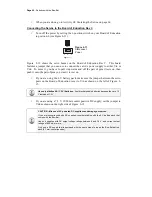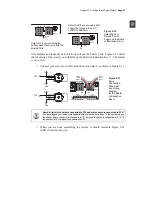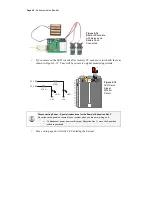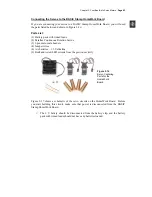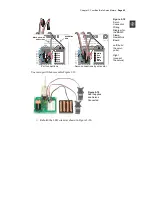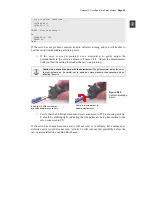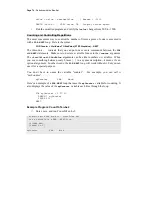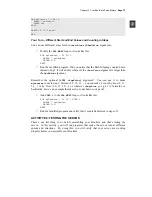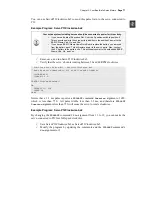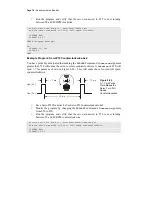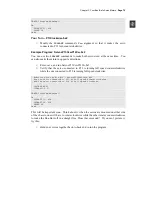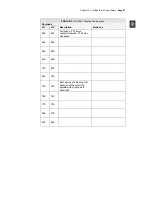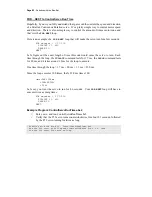
Page 74 ·
Robotics with the Boe-Bot
value = value - anotherValue ' Answer = -1500
DEBUG "value = ", SDEC value, CR ' Display values again
√
Run the modified program and verify that
value
changes from 500 to -1500.
Counting and Controlling Repetitions
The most convenient way to control the number of times a piece of code is executed is
with a
FOR…NEXT
loop. Here is the syntax:
FOR
Counter
=
StartValue
TO
EndValue {
STEP
StepValue}
…NEXT
The three-dots
...
indicate that you can put one or more commands between the
FOR
and
NEXT
statements. Make sure to declare a variable for use in the
Counter
argument.
The
StartValue
and
EndValue
arguments can be either numbers or variables. When
you see something between curly braces { } in a syntax description, it means it’s an
optional argument. In other words, the
FOR…NEXT
loop will work without it, but you can
use it for a special purpose.
You don’t have to name the variable “counter”. For example, you can call it
“myCounter”.
myCounter VAR Word
Here’s an example of a
FOR…NEXT
loop that uses the
myCounter
variable for counting. It
also displays the value of the
myCounter
variable each time through the loop.
FOR myCounter = 1 TO 10
DEBUG ? myCounter
PAUSE 500
NEXT
Example Program: CountToTen.bs2
√
Enter, save, and run CountToTen.bs2.
' Robotics with the Boe-Bot – CountToTen.bs2
' Use a variable in a FOR...NEXT loop.
' {$STAMP BS2}
' {$PBASIC 2.5}
myCounter VAR Word

